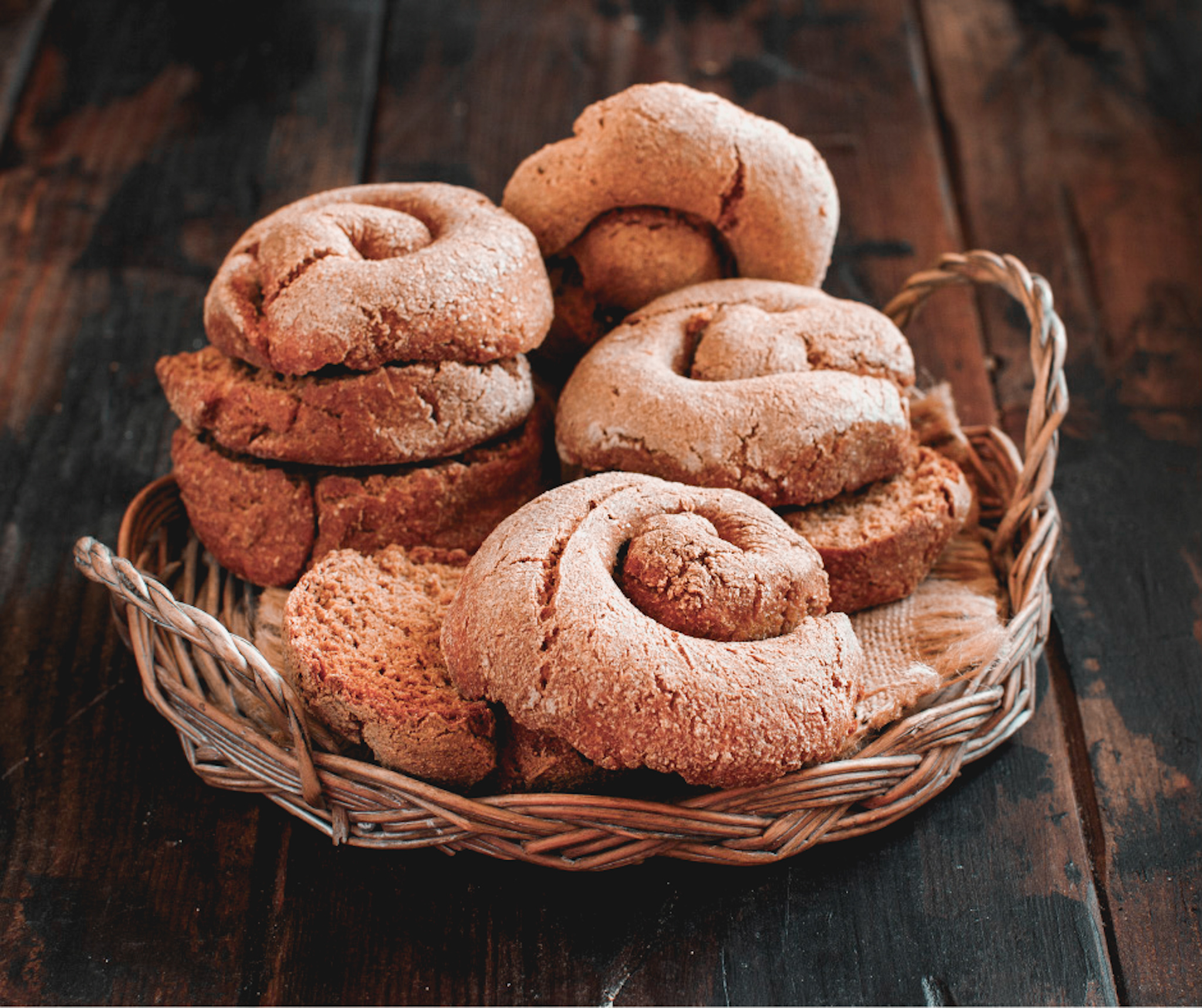It was the night between 21 and 22 November many years ago, a woman with hair wrapped in a handkerchief was preparing bread. He worked the mass, turned it, pressed it; he put all his energy to prepare bread for the family that was still asleep. It was supposed to be baked by 3:00.
Suddenly he heard voices, pre-Christmas songs. They were the bagpipers, who went down the street at dawn to pay homage to Santa Cecilia, the patron saint of musicians.
Enraptured by that music, she left home and joined the rest of the inhabitants who had been awakened by the same plot. But when he came home and opened the bread he found that the dough was too leavened. He did not lose heart.
So as the men began to light the fire and the children were still asleep, the woman thought to fry the dough.
Hot oil and lots of small spoonfuls of batter, which ended up in it. And then as soon as I touched the boiling and steaming oil, the dough dilated, swelled, smelled and above all smelled divinely, even the streets.
Miracle and delight! The “Pettola” was born, the Christmas bread, considered the gift of the Child Jesus to the poor.
And after reading this legend, made up of history and tradition, it’s time to roll up your sleeves and prepare your bibs with us. Here is our recipe for you!
Ingredients:
- 1kg of flour 00
- 1 boiled potato
- 1 cube of brewer’s yeast
- 1 tablespoon of salt
- 800 ml of warm water
- Evo oil for frying
Procedure:
Boil a potato and spoon it with a fork. In a large bowl sift the flour, insert the potato and in the center the yeast. Pour a couple of tablespoons of water and melt the yeast. Then, add more water and stir with your hands. Once all the water is added, add the salt and knead energetically in order to incorporate air, until you get a smooth and soft dough, without lumps and sticky: it will take 10-15 minutes to achieve it.
Now cover the bowl with plastic wrap or with a cotton cloth and let it rise in the oven off or in a dry place for a few hours.
Pour plenty of oil into a pan with high edges and heat it until the first bubbles appear. Wet a spoon and take the dough then pushing it into the oil with the help of the index finger or helping with another spoon. You can also take the dough with your hands wetting them always before taking each portion. Fry the breasts a few at a time, turning them continuously and increasing the temperature, so as to brown them. When they are uniform, remove them with a skimming ladle and lay on paper towels to remove excess oil.
Your Apulian “pettole” are ready to be served hot as they are, if you want to enjoy them as an appetizer, or wrapped hot in sugar or honey, if you serve them as a dessert.
Advice:
- To get a soft dough for your breasts, the secret is to work the batter energetically so that it will take up air.
- The frying pan must be rather high and the breasts must “splash” in the oil to prevent the inside remains raw.
- Instead of extra virgin olive oil you can also use seed oil, the important thing is that it is hot at the time of frying.
- To prepare the salted version of the chests, before frying the dough, add the diced cheese inside, the anchovies, olives, vegetables or whatever you like, then take the dough with a spoon and fry.
- The breasts should be fried and eaten immediately: after a few hours, in fact, lose their softness and their taste, becoming gummy. For this reason it is not recommended to prepare them in advance or to keep them.
Do you know that…
Every family has its perfect recipe, as well as every area of Puglia has its name to identify this soft fried cloud: pìttula, pìttola, pèttola, pèttele, pèttulu, pìttala, pètt-li, ppèttulu, pèttala, pèttuli, sckattabotte, pettue nguvatézze, popizze.
Whatever the dough and whatever the name, enjoy your meal and happy holidays!









